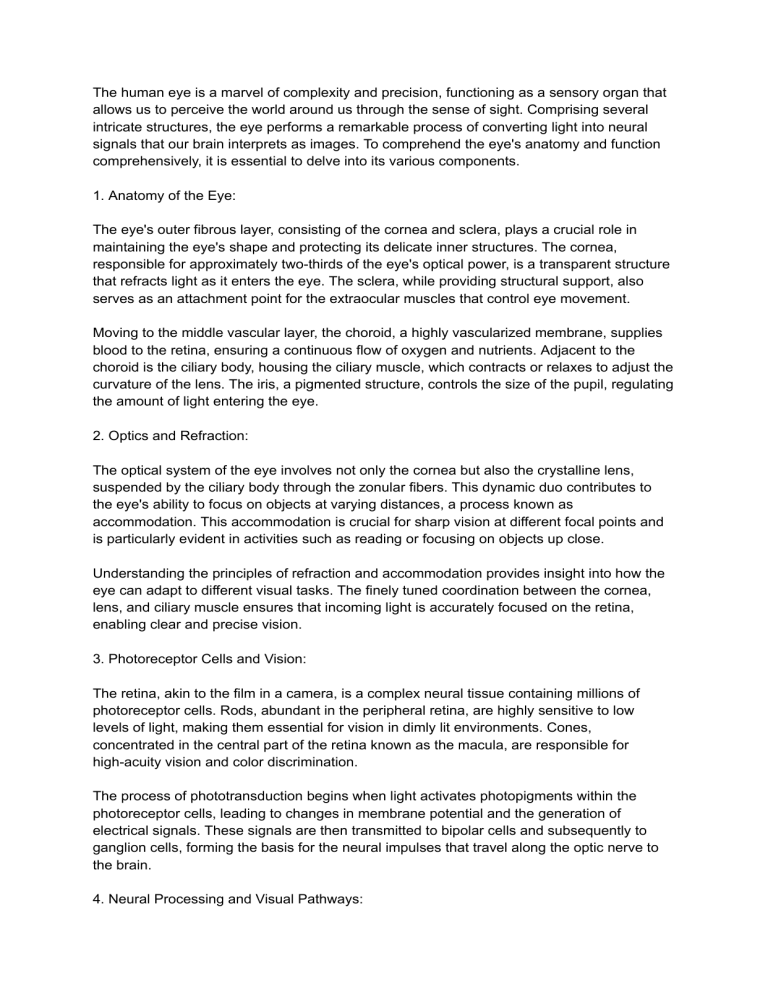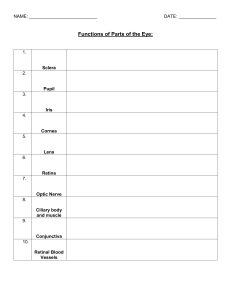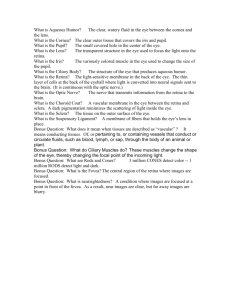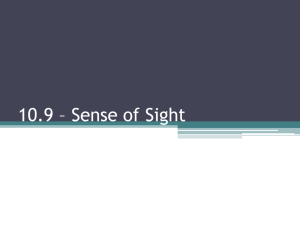
The human eye is a marvel of complexity and precision, functioning as a sensory organ that allows us to perceive the world around us through the sense of sight. Comprising several intricate structures, the eye performs a remarkable process of converting light into neural signals that our brain interprets as images. To comprehend the eye's anatomy and function comprehensively, it is essential to delve into its various components. 1. Anatomy of the Eye: The eye's outer fibrous layer, consisting of the cornea and sclera, plays a crucial role in maintaining the eye's shape and protecting its delicate inner structures. The cornea, responsible for approximately two-thirds of the eye's optical power, is a transparent structure that refracts light as it enters the eye. The sclera, while providing structural support, also serves as an attachment point for the extraocular muscles that control eye movement. Moving to the middle vascular layer, the choroid, a highly vascularized membrane, supplies blood to the retina, ensuring a continuous flow of oxygen and nutrients. Adjacent to the choroid is the ciliary body, housing the ciliary muscle, which contracts or relaxes to adjust the curvature of the lens. The iris, a pigmented structure, controls the size of the pupil, regulating the amount of light entering the eye. 2. Optics and Refraction: The optical system of the eye involves not only the cornea but also the crystalline lens, suspended by the ciliary body through the zonular fibers. This dynamic duo contributes to the eye's ability to focus on objects at varying distances, a process known as accommodation. This accommodation is crucial for sharp vision at different focal points and is particularly evident in activities such as reading or focusing on objects up close. Understanding the principles of refraction and accommodation provides insight into how the eye can adapt to different visual tasks. The finely tuned coordination between the cornea, lens, and ciliary muscle ensures that incoming light is accurately focused on the retina, enabling clear and precise vision. 3. Photoreceptor Cells and Vision: The retina, akin to the film in a camera, is a complex neural tissue containing millions of photoreceptor cells. Rods, abundant in the peripheral retina, are highly sensitive to low levels of light, making them essential for vision in dimly lit environments. Cones, concentrated in the central part of the retina known as the macula, are responsible for high-acuity vision and color discrimination. The process of phototransduction begins when light activates photopigments within the photoreceptor cells, leading to changes in membrane potential and the generation of electrical signals. These signals are then transmitted to bipolar cells and subsequently to ganglion cells, forming the basis for the neural impulses that travel along the optic nerve to the brain. 4. Neural Processing and Visual Pathways: The optic nerve serves as the conduit for visual information to travel from the retina to the brain. As these signals reach the brain's visual processing centers, intricate neural processing unfolds. The lateral geniculate nucleus in the thalamus acts as a relay station, and from there, signals are transmitted to the primary visual cortex in the occipital lobe. The primary visual cortex is responsible for early processing of visual information, such as detecting basic shapes and patterns. As signals progress through higher-order visual areas, more complex features, including object recognition and spatial relationships, are extracted. This hierarchical processing ultimately contributes to our rich and nuanced visual perception. 5. Color Vision and Photopigments: Cones, the photoreceptor cells responsible for color vision, contain different types of photopigments that respond to specific wavelengths of light. The trichromatic theory of color vision posits that the combination of signals from three types of cones—sensitive to short (blue), medium (green), and long (red) wavelengths—allows us to perceive a broad spectrum of colors. The absorption spectra of these photopigments overlap, enabling the brain to process and interpret various hues. Color vision not only enhances our ability to discern details but also plays a crucial role in emotional and aesthetic aspects of visual experience. 6. Visual Disorders and Corrections: Refractive errors, such as myopia, hyperopia, and astigmatism, can impact the eye's ability to focus light properly on the retina. Myopia, or nearsightedness, occurs when distant objects appear blurry, while hyperopia, or farsightedness, affects close-up vision. Astigmatism results from irregular corneal or lens curvature, causing distorted vision. Corrective lenses, whether in the form of eyeglasses or contact lenses, offer a precise and personalized solution to these refractive errors. Additionally, advancements in refractive surgery, such as LASIK (Laser-Assisted In Situ Keratomileusis), provide a more permanent correction by reshaping the cornea. 7. Eye Health and Maintenance: Regular eye examinations are essential for maintaining optimal eye health. Comprehensive eye exams not only assess visual acuity but also evaluate the overall health of the eye, including screening for conditions such as glaucoma and macular degeneration. Nutrition plays a vital role in supporting eye health. Vitamins A, C, and E, along with minerals like zinc, contribute to maintaining the health of the cornea and other ocular tissues. Omega-3 fatty acids, found in fish and certain nuts, are associated with lower risks of developing age-related macular degeneration. Protecting the eyes from harmful ultraviolet (UV) radiation is crucial in preventing conditions like cataracts and macular degeneration. Sunglasses that block both UVA and UVB rays provide effective protection. Adequate hydration, proper lighting during reading or screen time, and regular breaks from prolonged near work contribute to overall eye comfort and well-being. In conclusion, the eye's intricate structure and function underscore the marvel of human vision. From the outermost layers that protect and shape the eye to the inner neural processes that decode visual information, each component plays a vital role. Understanding the complexities of the eye not only enhances our appreciation for the sense of sight but also underscores the importance of proactive eye care and health maintenance throughout life. .






